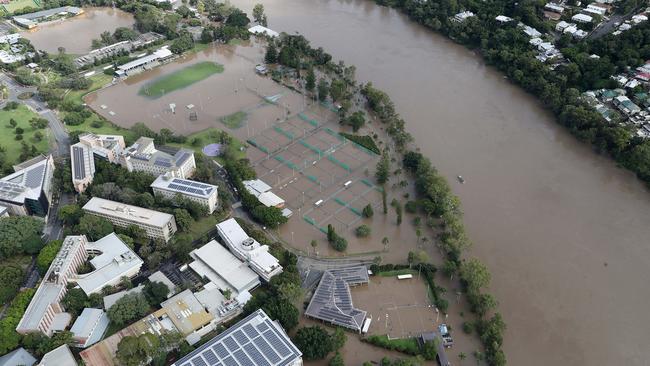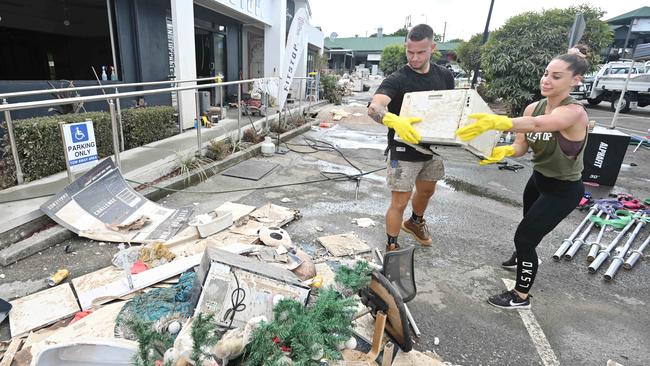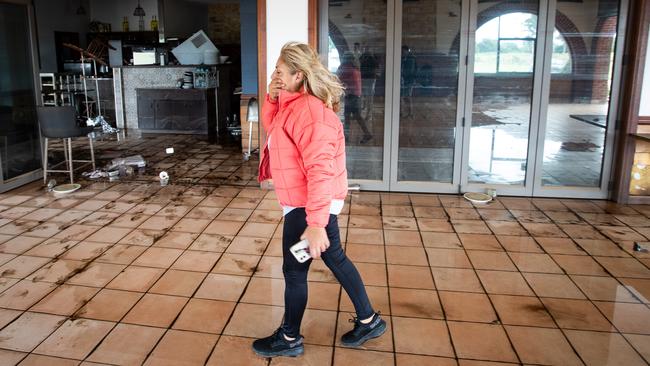
Most of the hikes happened when the last mega-flood hit Brisbane and parts of Queensland 12 years ago, at the time triggering $2.4bn in payouts. That disaster came right on the heels of more than $1bn in payouts by insurers for Victoria’s summer of deadly bushfires.
The insurance bill for the latest wave of floods and storms slamming Brisbane and the NSW east coast will climb even higher, with some early industry estimates putting the bill in excess of $4bn. This would put the disaster in the top five insurance payouts in Australia after factoring for inflation.

Fires, floods and storms are the core business of insurers. The numbers that insurers grapple with are getting bigger and with two once-in-a-century floods in the past decade you would think this could be enough to make the large global reinsurers that end up picking up the bill for the Australian disasters want to pack up and leave.
Not so, says career insurance executive Mark Millner. Reinsurance prices will rise “a little” as they seek to rebuild their capital buffers and this will be passed on to homeowners in the form of higher insurance premiums.
The reinsurers remain a critical part of how insurance works, because this is a way that the local insurers can offset their exposure to big risks and not go bust in a single event.
With top executive roles at two of the nation’s biggest insurers over two decades Millner often sat in the room during annual pricing talks between local insurers and reinsurers.
Until 2020, Millner headed up Insurance Australia Group’s vast Australian businesses. He was also the chief executive of Suncorp’s personal insurance unit and was the president of industry group, the Insurance Council of Australia. When a natural disaster hit or a large storm happened anywhere in Australia, Millner was often first to know.

The Brisbane-based executive says insurance operates under “the law of big numbers” which means that a big event in one area is averaged out by relative benign activity in another which helps to keep prices from getting too volatile.
“The premiums will go up. There’s no doubt about that,” he says.
“They keep going up, because the cost of everything keeps going up. But I don’t think reinsurance will drive a premium increase broadly”.
The sting for local policy holders will be that the east coast storms will be classed as separate events – split between the Brisbane and northern NSW floods and Sydney storms. This is likely to mean local insurers will have to payout more in “retention costs”.
While single large events are covered, insurers wear a charge every time they put in a reinsurance claim – this is just like property owners being hit with an excess charge for multiple insurance claims.
At the same time soaring rebuilding costs and Covid supply disruptions are likely to add to pressure to push premiums even higher in the coming year.
Both Suncorp and IAG recently said they were factoring inflation into higher premiums, which means that all homeowners – not just those in flood prone regions – end up picking up the bill.

Millner believes the global players will barely blink at the string of disasters seen in Australia of late.
Indeed, he sees Ukraine and the ongoing fallout from that conflict as a bigger payout risk for reinsurers, meaning they will be happy to stay in the relative stability of Australia.
Reinsurers look at Australia as an overall exposure risk rather than singular events and pricing is often determined by what is happening elsewhere in the world.
Repeated storms through Europe or floods and hurricanes in the US can often mean Australia’s payouts are relatively mild by comparison.
“My experience with the reinsurers is they’ve got short memories and capital rolls around fairly well in that industry,” Millner says.
“And it really does depend on what happens globally. There’s more risks around reinsurance with what’s going on with Russia and Ukraine than with floods in Australia.”
As of Wednesday morning IAG, the nation’s biggest insurer with brands including NRMA and CGU, had 24,000 claims for floods and storms in both states. This figure is expected to rise sharply in the coming days. Suncorp said it had more than 7500 claims and this too is expected to rise.
Meanwhile, Millner says these floods are a significant moment for the nation.
With global warming driving more frequent and bigger events, now more than ever there needs to be more done on flood mitigation such as building levees and channels before the event.

The industry has been arguing this for years, often with little momentum. Although he is starting to see a turning point.
Mitigation needs to be framed beyond keeping property safe with lives increasingly at risk from wild floods.
“All the cost benefit analysis was extremely strong,” Millner says. But it requires political commitment to infrastructure. Meanwhile, there will have to be hard conversations about building in flood plains or opening up risky land.
Earlier on Wednesday Reserve Bank governor Philip Lowe said there would be an economic cost to the floods and this was also likely to feed through to inflation – although he believed it would not be a source of ongoing inflation for the nation. He also urged flood mitigation to minimise future disruption.
“We will see higher prices for fruit and vegetables, the supply chain has been interrupted again,” Lowe told a conference in Sydney.
“In time there will be rebuilding effort and there’s already a large pipeline of construction activity in the country. This will add to that pipeline … and hopefully there will be efforts of flood mitigation over time. This will provide a medium-term boost to offset what is obviously a very difficult period right now.”
Floods in themselves are expensive, Millner says. But for insurers the number one payout risk they face is a large earthquake in Sydney. That could hit in excess of $50bn and would require some sort of government contribution. For a reference point, New Zealand’s Christchurch earthquake in 2011 triggered more than $35bn in property claims.
Other events include a cyclone hitting Brisbane and even as far south as Sydney. At the same time hail storms are high cost events given the usually massive spread of these incidents. Indeed Sydney’s hailstorm in 1999 is considered the most expensive natural disaster with insurers paying out the equivalent of $5.5bn in today’s terms.







In the past 14 years home insurance premiums have gone up on average 8.5 per cent every year. In this time there was just one year of sunshine for battered property owners where there were no price rises.